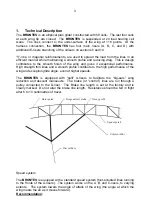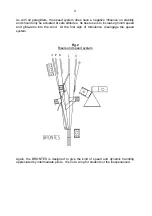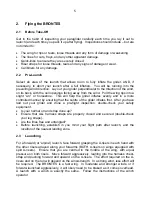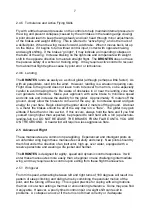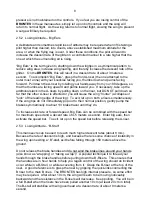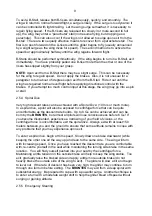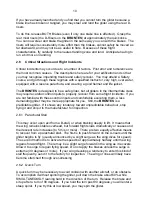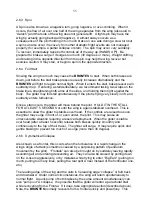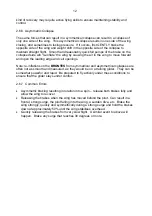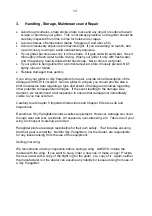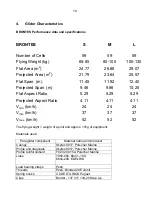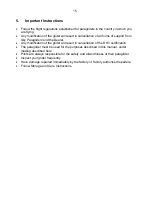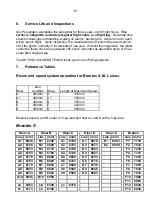
11
2.6.3 Spin
A Spin is also known as a negative turn, going negative, or over-climbing. When it
occurs, the flow of air over one half of the wing separates from the wing (also said to
“detach”) and that side of the wing does not generate lift. A tight spin may have the
wing tip actually going backward (negative). It almost always occurs as a
consequence of the pilot holding in too much brake on one side during a slow turn but
a spin can also occur if recovery from other dramatic flight events are not managed
properly (for example, a partial collapse or stall). The spin may occur very suddenly.
To recover, immediately raise both controls all of the way up (HANDS UP!). Be
prepared to brake a surge if it surges too much (30 degrees or more). Weight shifting
and braking in the opposite direction from the spin may help the wing recover but
exercise caution: It may stall, or begin to spin in the opposite direction.
2.6.4 Full Stall
Slowing the wing too much may cause the
BRONTES
to stall. When both brakes are
down, just before the stall brake pressure usually increases dramatically and the
BRONTES
will fight to regain normal flight. When it enters the stall, bake pressure will
suddenly drop. If entering a stall deliberately, we recommend taking two wraps on the
brake lines, straightening both arms at the sides, and holding them tight against the
body. The glider may full stall spontaneously if the pilot is flying very slowly in lift, and
suddenly enters turbulence.
Once a stall occurs, the glider will move behind the pilot. HOLD IT IN THE STALL
FOR AT LEAST 5 SECONDS or until the wing is again stabilised overhead. This is
essential to allow the glider to stabilise overhead. If the controls are raised too soon,
the glider may surge in front of, or even under, the pilot. This may cause an
unrecoverable situation requiring a reserve deployment. When the glider is stable
over head (after at least 5 second) release both brakes quickly smoothly and
continuously to the top of their travel. The glider will surge. It may require quick and
gentle braking to prevent too much of a surge (more than 30 degree).
2.6.5 Symmetrical
Collapse
Also known as a frontal, this occurs when the turbulence or a rapid change in the
wing’s angle of attack (sometimes caused by a porpoising pattern of pendulum
movement by the pilot). “Frontals” can also be brought on by suddenly leaving rapidly
ascending air and entering descending air. They can also be caused by pulling down
on the A-risers aggressively, or by mistakes while trying to enter “Big Ears” (pulling too
much, pulling too many lines, pulling the rear split A riser instead of the front/outer one,
etc.)
The leading edge of the wing and the cells in he leading edge “collapse” or fold back
and downward. Under normal circumstances, the wing will return spontaneously to
normal flight. A quick pump of both brakes by the same amount simultaneously can
also “pump out” a collapse. It is possible that the glider will enter a parachutal stall
while recovering from a Frontal. If it does, take appropriate action (described above).
Note, the
BRONTES
normally recovers from a frontal quickly and powerfully. This
Содержание BRONTES
Страница 18: ...18 ...



